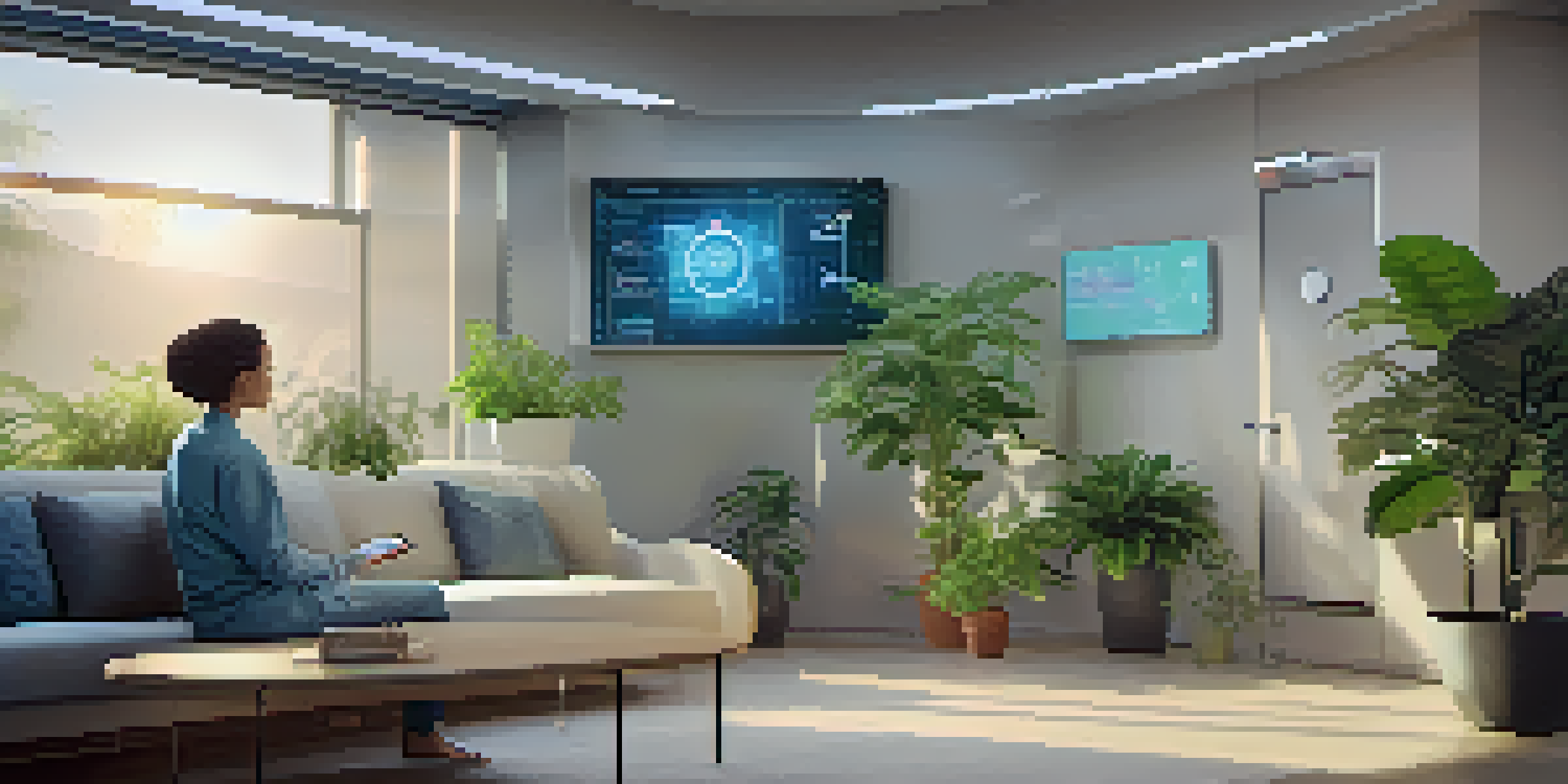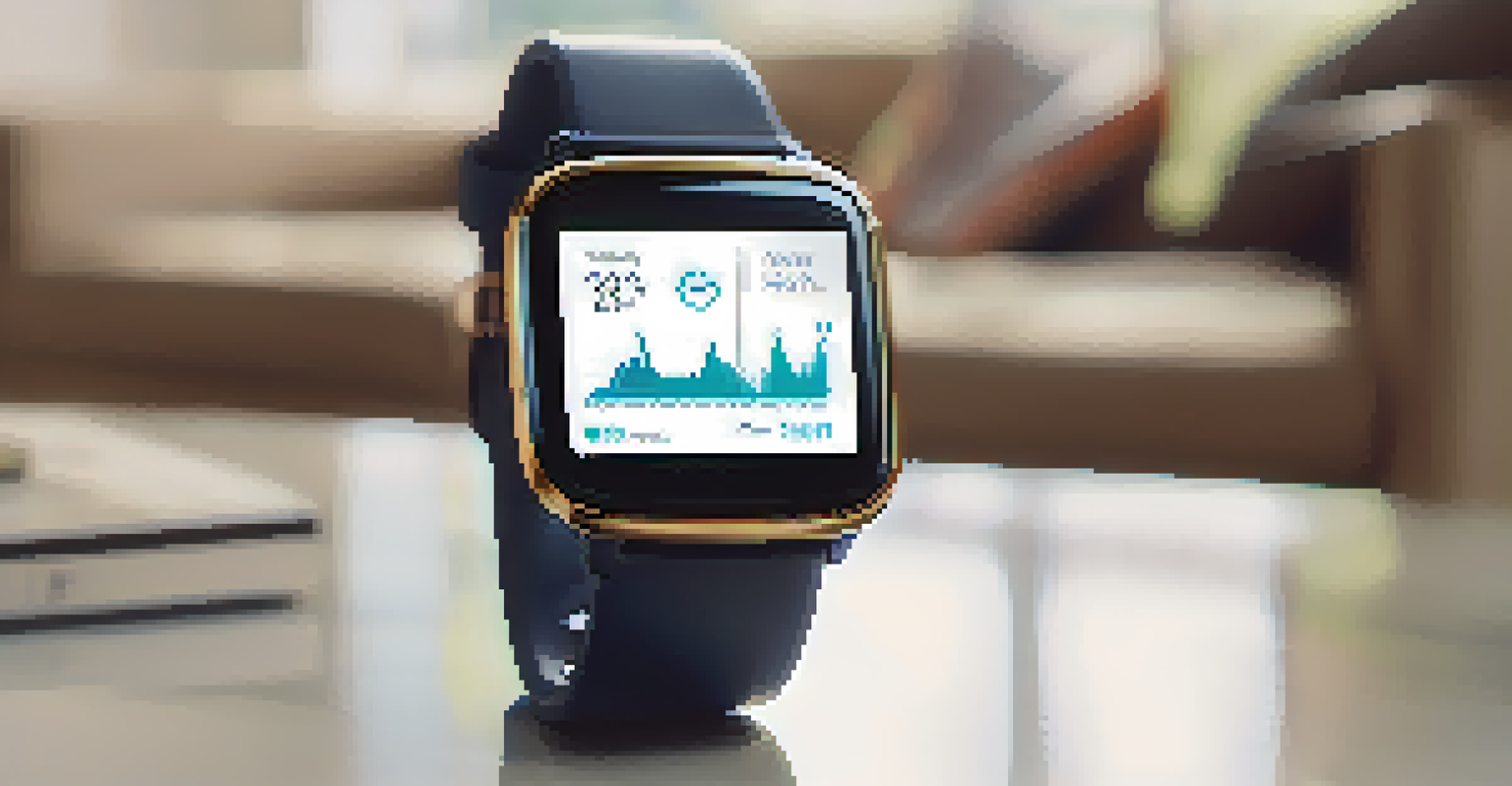The Future of Remote Monitoring Technologies in Healthcare

Understanding Remote Monitoring in Healthcare Today
Remote monitoring technologies are revolutionizing the healthcare landscape. They enable healthcare providers to keep track of patients' health from afar, using devices like wearable fitness trackers and smart health monitors. This shift not only enhances patient convenience but also allows for timely interventions, reducing hospital visits and improving overall care.
The future of healthcare is not just about technology; it's about understanding the patient experience and empowering individuals to take charge of their health.
At its core, remote monitoring leverages technology to gather real-time health data, such as heart rate and blood pressure, which can be analyzed remotely. This data is crucial for chronic disease management, ensuring that patients receive tailored care without the need for constant in-person consultations. With the rise of telehealth, these technologies are becoming more integrated into everyday healthcare practices.
As we delve into the future, it’s essential to recognize how these technologies are paving the way for more proactive and personalized care. Patients are becoming active participants in their health journeys, empowered by the knowledge and tools at their disposal through remote monitoring.
Key Technologies Driving Remote Monitoring Forward
Several emerging technologies are shaping the future of remote monitoring in healthcare. For instance, wearable devices like smartwatches and fitness bands collect data on various health metrics, providing users and healthcare providers with valuable insights. Additionally, mobile applications are making it easier for patients to track their health and share information seamlessly with their doctors.

Artificial Intelligence (AI) also plays a pivotal role in analyzing the vast amounts of data generated by these devices. By identifying patterns and potential health risks, AI can help healthcare professionals make informed decisions quickly. This not only enhances the quality of care but also facilitates a quicker response to emerging health issues.
Remote Monitoring Enhances Care
Remote monitoring technologies allow healthcare providers to track patient health remotely, leading to timely interventions and improved care.
Moreover, the Internet of Things (IoT) connects various devices, allowing for a more integrated approach to health monitoring. Imagine a scenario where your smart fridge alerts you to dietary changes based on your glucose levels tracked by a wearable device—this interconnectedness is the future we are heading toward.
The Role of Telehealth in Remote Monitoring
Telehealth has become a crucial complement to remote monitoring technologies. It allows healthcare providers to consult with patients virtually, making healthcare more accessible, especially for those in remote areas. This synergy between telehealth and remote monitoring means that patients can receive expert advice without the barriers of distance or travel.
Remote monitoring is a game changer in healthcare, allowing us to provide personalized care and monitor patients in real-time, transforming how we approach chronic disease management.
During the COVID-19 pandemic, the importance of telehealth was magnified. Many patients turned to virtual consultations, utilizing remote monitoring devices to provide their doctors with real-time data. This trend not only ensured continuity of care but also highlighted the effectiveness of remote monitoring in managing health conditions during crises.
As telehealth continues to evolve, we can expect more sophisticated integrations with remote monitoring technologies. The combination of these services will likely lead to enhanced patient outcomes, as healthcare providers can make quicker, data-driven decisions based on comprehensive health information.
Patient Engagement and Empowerment Through Technology
One of the most significant benefits of remote monitoring technologies is the empowerment of patients. By having access to their health data, patients can take charge of their health journeys, making informed decisions about their lifestyle and treatment options. This empowerment fosters a sense of ownership and responsibility towards personal health.
Moreover, many remote monitoring apps come with educational resources that help patients understand their conditions better. This knowledge can lead to improved adherence to treatment plans, as patients feel more connected to their health. Engaged patients are often more proactive, leading to better health outcomes.
Telehealth Complements Monitoring
The integration of telehealth with remote monitoring facilitates virtual consultations, making healthcare more accessible and efficient.
As we look to the future, creating user-friendly interfaces and providing support will be crucial in maintaining patient engagement. The more intuitive and accessible these technologies are, the more likely patients will embrace them as vital tools in their healthcare toolkit.
Challenges Facing Remote Monitoring Technologies
Despite the promising future of remote monitoring technologies, several challenges remain. Data privacy concerns are at the forefront, as sensitive health information is often transmitted over the internet. Ensuring that this data is secure from breaches is critical for maintaining patient trust in these technologies.
Additionally, the reliability of the devices themselves can be a concern. If a wearable device provides inaccurate data, it can lead to misdiagnosis or inappropriate treatment decisions. Continuous improvement and rigorous testing of these technologies are essential to ensure their efficacy in real-world applications.
Lastly, the digital divide cannot be overlooked. Not all patients have equal access to the technology required for remote monitoring, which can exacerbate existing healthcare disparities. Addressing these issues will be crucial in ensuring that remote monitoring benefits everyone, regardless of their socioeconomic status.
The Future Landscape of Remote Monitoring
Looking ahead, the future of remote monitoring technologies in healthcare appears bright. With advancements in AI, machine learning, and IoT, we can expect even more sophisticated systems that offer real-time insights into patient health. These innovations will likely lead to more personalized care pathways, tailored to individual needs and conditions.
Furthermore, as healthcare systems recognize the value of remote monitoring, more resources will be allocated to develop and implement these technologies. We're likely to see an increase in partnerships between tech companies and healthcare providers, fostering innovation and improving patient care.
Patient Empowerment Through Tech
Remote monitoring empowers patients by providing access to their health data, fostering informed decision-making and better health outcomes.
Ultimately, the future of remote monitoring will revolve around enhancing patient experiences and outcomes. By integrating technology into the healthcare ecosystem, we can create a more responsive, efficient, and patient-centered approach to health management.
Conclusion: Embracing the Future of Healthcare
In conclusion, remote monitoring technologies are set to redefine the healthcare landscape. By harnessing the power of technology, we can create a system that prioritizes patient engagement, timely care, and personalized health strategies. The integration of remote monitoring into everyday healthcare practices promises a future where patients and providers work hand-in-hand for better outcomes.
As we continue to embrace these advancements, it's crucial to address the challenges head-on, ensuring that all patients can benefit from these innovations. By fostering a collaborative environment between technology developers, healthcare providers, and patients, we can create a robust framework for the future of healthcare.

The journey ahead is filled with possibilities, and as we navigate this evolving landscape, the ultimate goal remains the same: to enhance the quality of care and improve the health of individuals and communities alike.